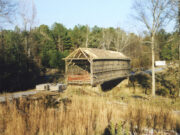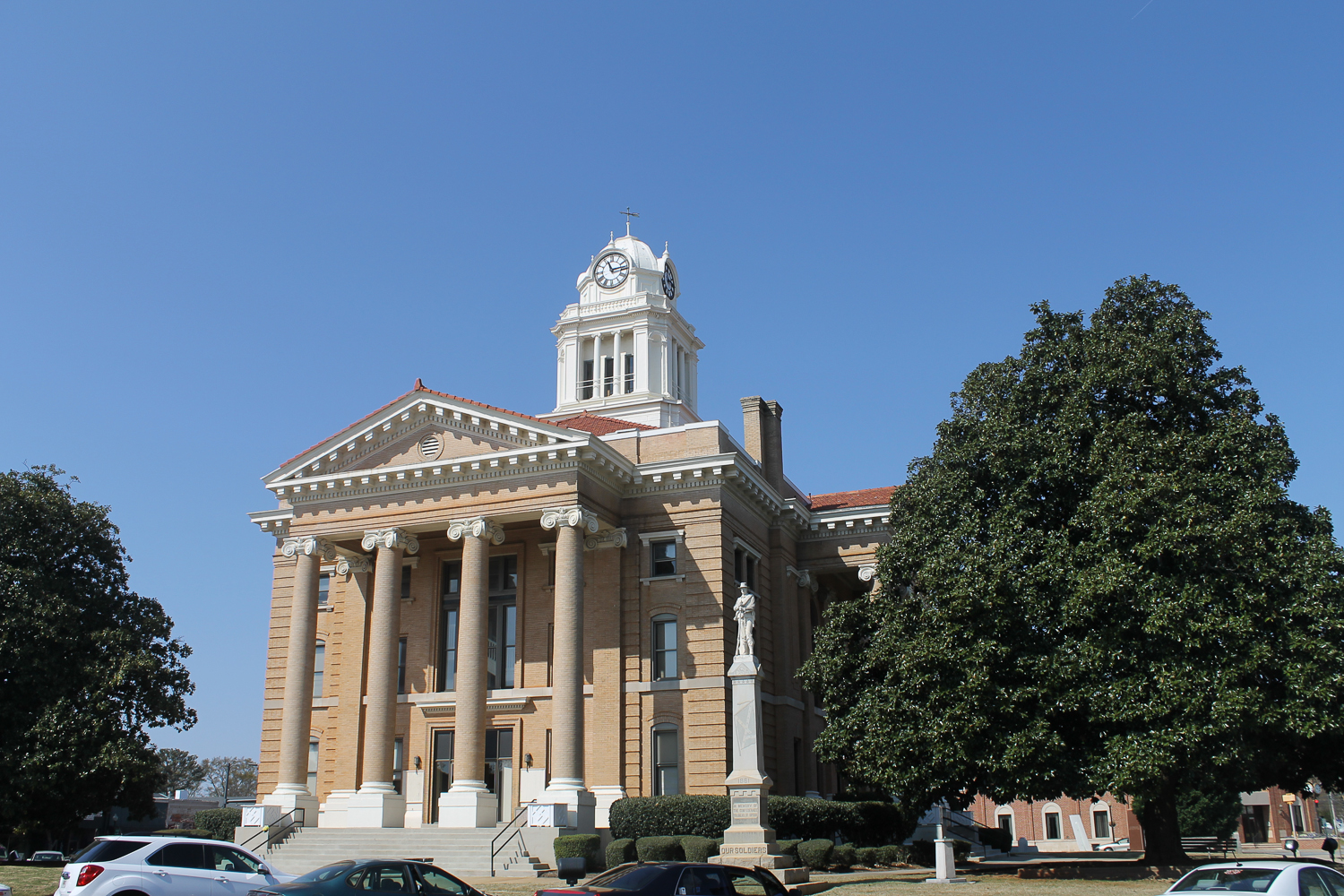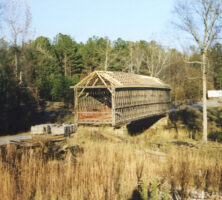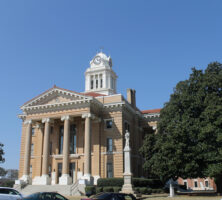Upson County, in west central Georgia, was established by an act of the state legislature on December 15, 1824.
The Treaty of Indian Springs (1821) between the United States and the Creek Indians gave the government the land that extended from the Ocmulgee River to the Flint River through middle Georgia. Upson County was created from Pike and Crawford counties. Many settlers were drawn to the area by the lottery system used to settle the acquired lands. The state’s fifty-ninth county was named in honor of the noted Georgia lawyer Stephen Upson (1784/5-1824) just four months after his death. It is also the birthplace of John B. Gordon, a major general in the Confederate army and a governor of Georgia.
In March 1825 the justices of the inferior court bought land lot 217 in the Tenth District to build the courthouse and the jail. Around this lot grew Thomaston, the county seat. Incorporated June 11, 1825, the town was named for General Jett Thomas, a hero of the War of 1812 (1812-15).
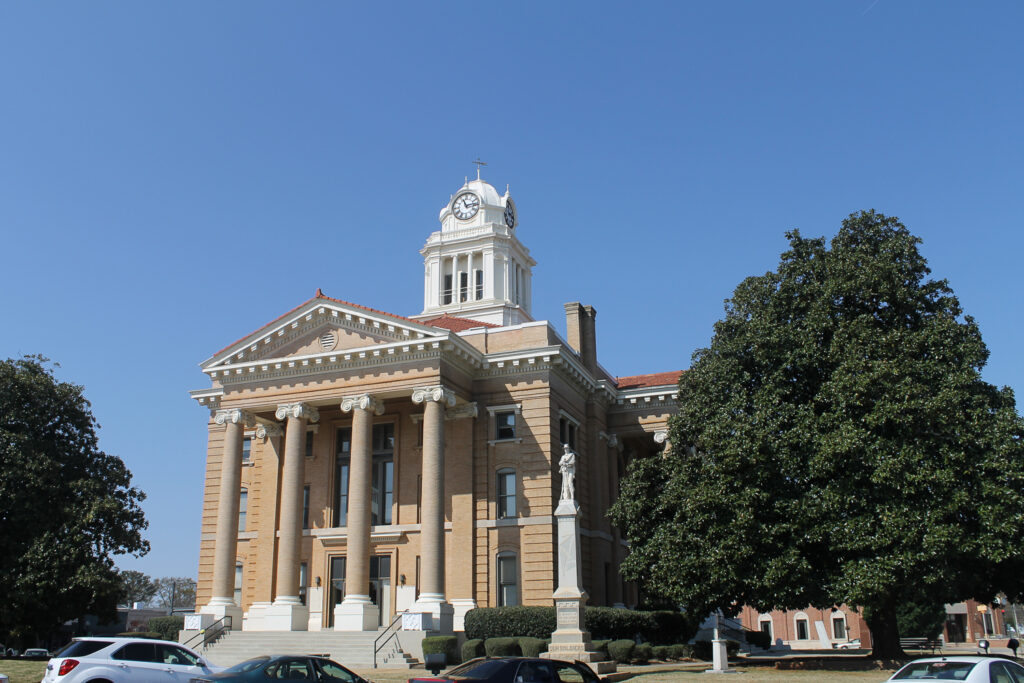
The majority of the settlers to Upson County came from the eastern counties of Georgia, between the Oconee River and Augusta. Some were wealthy plantation owners who also owned many enslaved laborers. Farming the rich soil of the eastern section of Upson County, around the town of The Rock and along the Flint River, they primarily grew cotton. Other settlers came from North Carolina and South Carolina. The first cotton mill in Upson County, the Waymanville or Franklin Factory, was built on Tobler Creek in 1833, and in 1835 a group of New Englanders arrived to manufacture textiles.
The Old Alabama Stagecoach Road, a well-traveled stagecoach and wagon-freight line between Augusta and Columbus, ran from the northeastern section of Upson County, crossing the Flint River at Double Bridges in the southwest. Double Bridges is the site where two bridges spanned either side of Owen’s Island in the middle of the Flint River; a brief Civil War (1861-65) cavalry skirmish took place there. On April 18, 1865, Union raiders began three days of devastation in Upson County. Major General James Harrison Wilson’s cavalry was headed toward Macon; its task was to destroy the agricultural and industrial facilities in the South. Fifty men of the First Battalion Georgia Cavalry Reserves stood to defend the bridges. The defenders fired a few scattered shots at the larger Union forces before fleeing. Homes were pillaged and burned, and several factories were destroyed, including the Waymanville cotton mill.
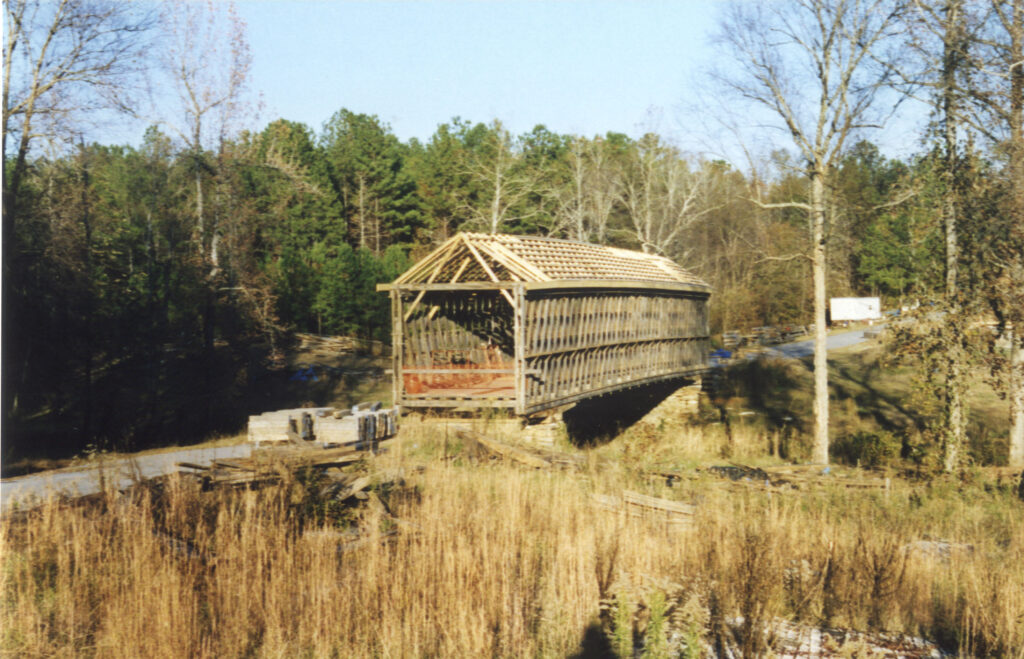
After the war mills continued to be an important part of the county’s economy. Thomaston Mills was a major employer in the county from its beginning in 1899 until 2000, when the company declared bankruptcy. Martha Mills, a manufacturer of tire cord fabric, began operation in 1927 and continues to be a large employer (Martha Mills was bought by B. F. Goodrich, later WesTek, in 1929). In the 1920s the peach industry thrived in Upson County, but peaches all but vanished in the county with the onset of the Great Depression in the 1930s, as orchard laborers found work in the mills. Peach orchards were cut down to make room for timber stands.
In 1930 a history of the county, History of Upson County, Georgia, was sponsored by the Daughters of the American Revolution and coauthored by Evelyn Hanna, a well-known author of romantic fiction.

Upson County is home to Southern Crescent Technical College, and several sites draw tourism to the area. Sprewell Bluff is a 200-acre area of climbing river bluffs formed by the Flint River as it cuts through Oak Mountain. A three-mile trail winds along the bank. The Sprewell Bluff State Park offers 1,372 acres for fishing, hiking, picnicking, horseshoes, and volleyball. Auchumpkee Covered Bridge, located in the southeastern part of the county, is an exact replica of the 1892 bridge that was destroyed in the floods that swept through the state in 1994. Federal disaster-relief money paid for covered-bridge craftsman Arnold M. Graton to reconstruct the bridge.
According to the 2020 U.S. census, the population of Upson County was 27,700.


